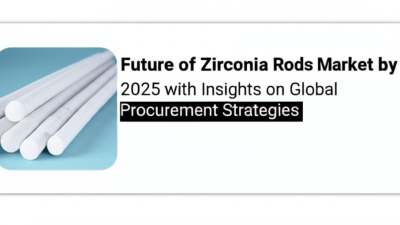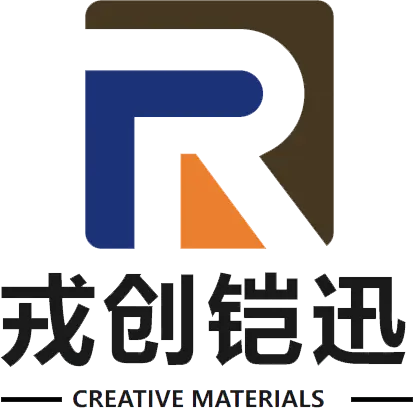The Zirconia Rods market is poised for significant growth by 2025, driven by the increasing demand in diverse applications such as ceramics, electronics, and dental materials. According to a recent industry report by Markets and Markets, the zirconium market is expected to reach USD 1.8 billion by 2025, with zirconia rods playing a pivotal role in catering to this rising demand.

As industries evolve and focus on advanced materials, zirconia rods are gaining traction due to their superior mechanical properties, corrosion resistance, and thermal stability. Furthermore, global procurement strategies are adapting to optimize resource allocation and meet the surging needs across different sectors.
This blog will delve into the future landscape of the Zirconia Rods market, analyzing trends and strategies that are shaping its growth trajectory in the coming years.
Zirconia rods have gained considerable attention due to their exceptional properties, making them highly versatile across various industries. The unique characteristics of zirconia, such as its high toughness, wear resistance, and thermal stability, position it as a material of choice in applications ranging from dental prosthetics to advanced sensors.
For instance, the development of rod-type yttria-stabilized zirconia (YSZ) sensors showcases its effectiveness in environmental monitoring, particularly in detecting low concentrations of pollutants. Recent advancements have demonstrated that YSZ can achieve high sensitivity, reinforcing its role in sustainable technology.
Furthermore, the growing demand for alternative energy solutions is pushing the boundaries of zirconia-based materials. Research highlights the optimization of initial zirconia nanopowders to enhance material properties, paving the way for multifunctional applications. According to market research, the global zirconia market size is expected to experience substantial growth by 2025, attracting investments from various sectors aimed at leveraging these unique material characteristics. Industries are increasingly focusing on procurement strategies that prioritize high-quality zirconia rods to meet stringent performance requirements in next-generation technologies.
The global zirconia rods market is witnessing significant transformations driven by evolving procurement strategies and growing demand across various industries. According to a recent report by Market Research Future, the market for zirconia rods is projected to reach USD 300 million by 2025, growing at a CAGR of 5.8%. This growth is largely attributed to the increasing adoption of zirconia in dental applications, electronics, and aerospace, where its unique properties such as high strength and thermal stability are highly valued.
To keep pace with this growth, companies are adopting innovative procurement strategies. Strategic partnerships with suppliers are becoming essential to secure high-quality raw materials at competitive prices. For instance, sourcing locally can reduce lead times and costs, thus enhancing supply chain efficiency. Furthermore, integrating advanced procurement technologies, like AI and machine learning, enables companies to streamline their operations and make data-driven decisions. As organizations continue to navigate fluctuations in demand and supply chain disruptions, these strategic initiatives will be crucial for maintaining a competitive edge in the zirconia rods market.
The Zirconia rods market is poised for substantial growth by 2025, driven by several key trends that are shaping procurement strategies globally. As industries increasingly seek materials that offer superior strength and thermal stability, zirconia has emerged as a preferred choice, particularly in sectors like manufacturing, electronics, and biomedical. The versatility of zirconia rods in various applications enhances their appeal, making them a focus for companies looking to innovate and improve product performance.
Sustainability is another critical trend influencing the Zirconia rods market. Manufacturers are increasingly adopting eco-friendly practices and sourcing raw materials responsibly, reflecting a broader shift towards sustainability across industries. This trend not only aids in reducing environmental impact but also resonates with consumers who are becoming more environmentally conscious. As a result, procurement strategies in this market are evolving to emphasize the importance of sustainable sourcing, ensuring that suppliers align with these values while meeting the growing demand for high-quality zirconia products. This dynamic landscape sets the stage for a transformative period leading up to 2025.
| Dimension | 2022 Estimate | 2025 Forecast | CAGR (%) |
|---|---|---|---|
| Global Market Size (USD Million) | 150 | 200 | 9.5% |
| Asia-Pacific Market Share (%) | 40 | 45 | 3.5% |
| North America Market Share (%) | 30 | 28 | -2.0% |
| Europe Market Share (%) | 25 | 24 | -1.3% |
| Key Application Sectors | Dental, Medical, Aerospace, Electronics | ||
When considering the use of zirconia rods, it's essential to carry out a comparative analysis against other materials to understand their unique advantages and limitations. Zirconia rods are known for their exceptional strength, toughness, and resistance to wear, making them ideal for applications in demanding environments, such as dental implants and cutting tools. In contrast, materials like aluminum and stainless steel may be more cost-effective for less demanding applications but often lack the same level of durability and performance.
Tip: When selecting a material for your project, assess the specific requirements of your application, including mechanical properties, corrosion resistance, and thermal stability. This will help you determine whether zirconia rods or an alternative material is the better choice.
Moreover, the environmental impact and the manufacturing process of zirconia rods should also be compared to alternatives. While zirconia is celebrated for its non-reactive nature, other materials might offer easier fabrication or lower energy consumption during production. Understanding these factors is crucial for businesses aiming to enhance their sustainability practices.
Tip: Always consider the lifecycle impacts of your chosen materials, from procurement to disposal. Engaging with suppliers who prioritize sustainable practices can further contribute to a more responsible production methodology.
The advancement of zirconia rod manufacturing techniques is set to revolutionize various industries, particularly in dental and aerospace applications. Recent industry reports indicate that the global zirconia market is projected to reach USD 2.5 billion by 2025, driven by a demand for high-performance materials that provide enhanced durability and corrosion resistance. Innovations like 3D printing and advanced sintering techniques are poised to improve production efficiency and reduce costs, fostering wider adoption of zirconia rods in diverse applications.
One notable development in manufacturing is the integration of additive manufacturing processes that allow for complex geometries and tailored properties in zirconia rods. According to a study by MarketWatch, companies leveraging these techniques can achieve up to 30% cost savings while significantly enhancing product performance. Furthermore, the use of nanotechnology in zirconia formulations is enhancing the mechanical properties of rods, making them even more suitable for high-stress environments. As these innovations unfold, stakeholders are advised to revisit their procurement strategies to capitalize on the benefits that next-generation zirconia rod manufacturing can bring to their operations.
